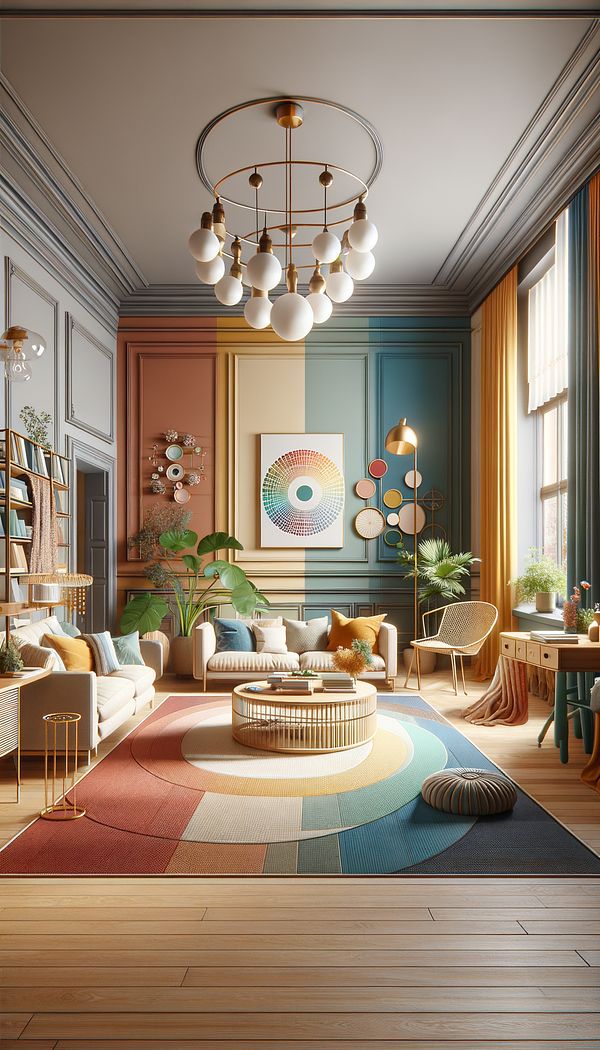What is Color Theory?
Color Theory is the study of colors in relation to one another.
Description
Color Theory is a crucial concept within the world of interior design, serving as the foundation upon which designers build their color schemes and palettes. It encompasses the art and science of colors, focusing on how we perceive them, how they interact together, and the messages they convey. This theory is grounded in the color wheel, a visual representation of colors arranged according to their chromatic relationship. The wheel includes primary colors (red, yellow, and blue), secondary colors (created by mixing primary colors), and tertiary colors (created by mixing primary and secondary colors).
Moving beyond the basics, Color Theory delves into the psychology of colors—how certain colors can affect mood, emotions, and even behaviors. This aspect of the theory is particularly important in interior design, where the selection of color can transform a space from warm and inviting to cool and serene. Designers also utilize concepts like color harmony and contrast, to create visually appealing and balanced spaces.
Moreover, Color Theory addresses the use of color in lighting, texture, and patterns, demonstrating how different contexts can change the perception of a color. It emphasizes the importance of understanding color temperature, saturation, and value, which all play a significant role in the final appearance of a design project.
Usage
In interior design, Color Theory is applied in various ways, from choosing paint colors for walls to selecting fabric for furniture. For example, a designer might use complementary colors to create a vibrant and dynamic room or choose analogous colors for a more harmonious and subdued atmosphere. Similarly, understanding the psychological impact of colors can guide the selection for spaces intended for relaxation or productivity. Color Theory also informs the choice of accent colors, which can bring life to neutral spaces without overwhelming the senses.
FAQs
-
What is the color wheel?
The color wheel is a circular diagram that shows the relationships between colors. It includes primary, secondary, and tertiary colors, and is a fundamental tool in understanding Color Theory.
-
How does Color Theory affect mood?
Colors have the power to evoke emotions and influence mood. Warm colors like red and orange can energize a space, while cool colors like blue and green tend to be calming. Color Theory helps designers choose colors that align with the desired emotional impact of a room.
-
Can Color Theory be applied to small spaces?
Absolutely! Color Theory is particularly useful in optimizing small spaces. Light and neutral colors can make a room look larger and more open, while dark or bold colors can add depth and character to a cozy space.
Practical Application
When applying Color Theory in interior design, start with a basic understanding of the color wheel and the relationships between colors. Consider the psychological impact of your color choices and how they will influence the atmosphere of the space. Don't be afraid to experiment with color schemes, but keep balance and harmony in mind. Remember, the most effective color palettes often involve a mix of complementary, analogous, and neutral colors. It's also important to account for the lighting of the space, as it can significantly alter the appearance of colors.
-
Design QuestionnaireA design questionnaire is a tool used to gather information from clients on their preferences, requirements, and goals for an interior design project.
-
Accent PieceAn accent piece is an item within an interior space that stands out due to its color, shape, texture, or unique design.
-
Color SchemeA color scheme is an intentional selection of colors used in design for aesthetics and practical purposes.
-
Colour HarmonyColour Harmony is the pleasing arrangement of colours.
-
CohesiveCohesive refers to a design that appears unified and harmonious, with all elements working together effectively.
